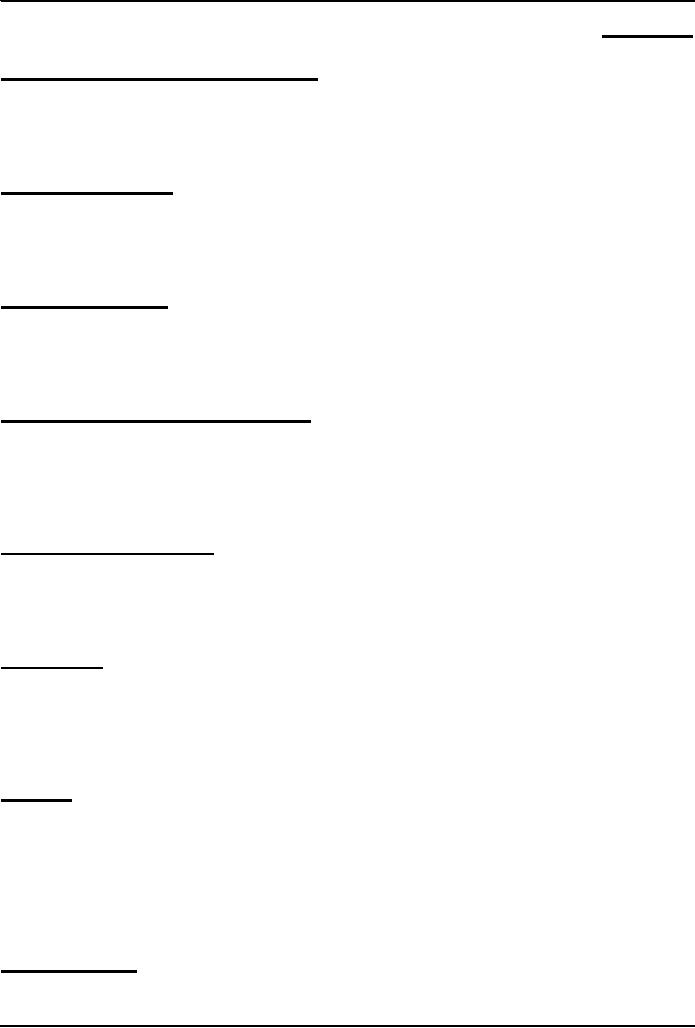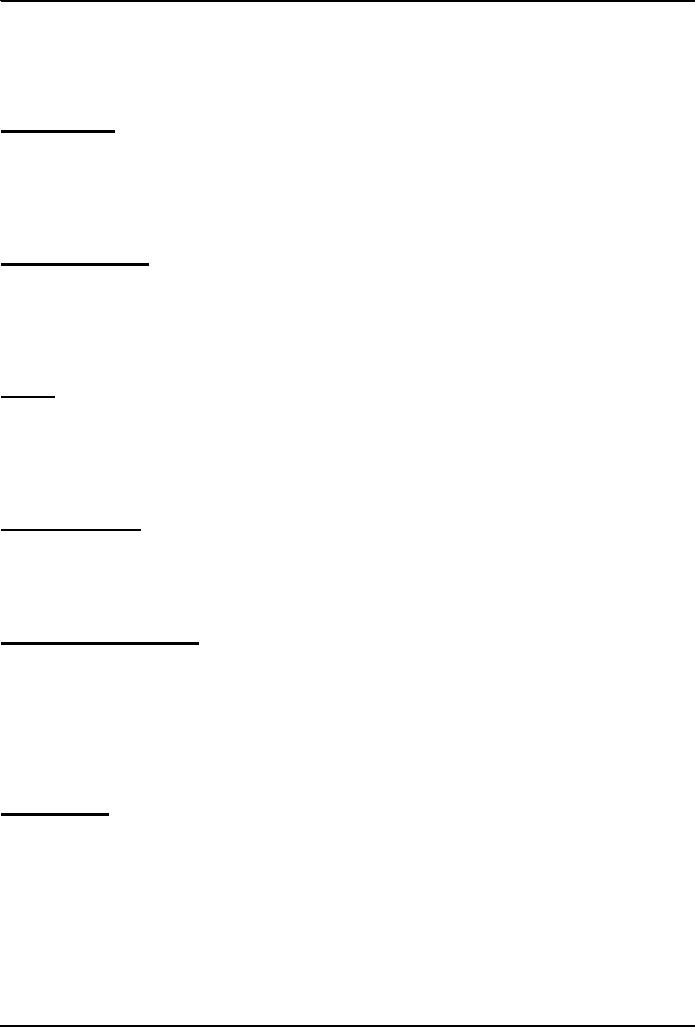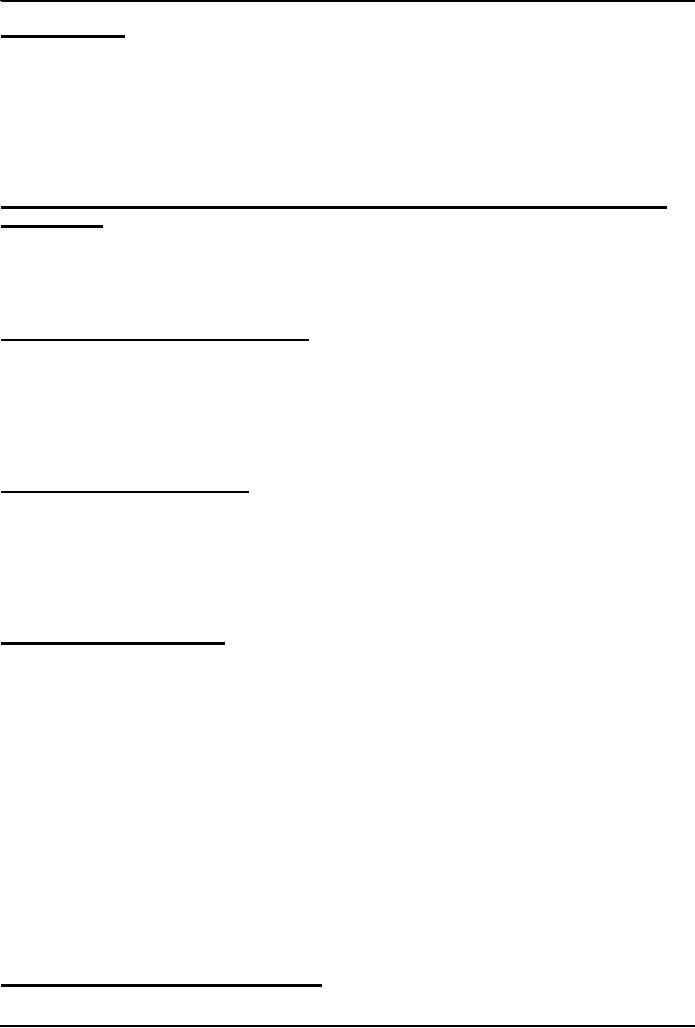 |
Social Implications of Computing |
| << CYBER CRIME |
| IMAGES & ANIMATION >> |

Introduction
to Computing CS101
VU
LESSON
40
SOCIAL
IMPLICATIONS OF COMPUTING
Focus
of the last Lesson was on
Cyber Crime
�
We
found out about several types of computer
crimes that occur over cyber
space
�
We
familiarized ourselves with with several
methods that can be used to
minimize the ill effects of
these
crimes
Three
Phases of the DoS
1.Search
2.Arm
3.Attack
Neutralizing
the Attack
�
The
engineers responsible for monitoring the
traffic on the Yahoo Web sites
quickly identified the
key
characteristics of the packets
originating from those
drones
�
Then
they setup filters that
blocked all those
packets
How
to stop DoS attacks from
taking place?
�
Design
SW that monitors incoming
packets, and on noticing a
sudden increase in the number of
similar
packets, blocks them
�
Convince
system administrators all
over the world to secure
their servers in such a way
that they
cannot be
used as drones
Cyber
crime can be used to
...
�
Damage
a home computer
�
Bring
down a business
�
Weaken the
telecom, financial, or even defense-related systems of
a country
Mail
Bombing
�
A
stream of large-sized eMails are
sent to an address, overloading the
destination account
�
This
can potentially shut-down a
poorly-designed eMail system or
tie up the telecom channel for
long
periods
�
Defense:
eMail filtering
Break-Ins
�
Hackers
are always trying to
break-in into Internet-connected
computers to steal info or
plant
malicious
programs
�
Defense:
Firewalls
Intrusion
detectors
Other
effective security
policies
Credit
Card Fraud
�
A
thief somehow breaks into an
eCommerce server and gets
hold of credit numbers and
related
info
271

Introduction
to Computing CS101
VU
�
The
thief then uses that
info to order stuff on the
Internet
�
Alternatively,
the thief may auction the
credit card info on certain
Web sites setup just for
that
purpose
�
Defense:
Use single-use credit card
numbers for your Internet
transactions
Software
Piracy
�
Using
a piece of SW without the author's permission or
employing it for uses not
allowed by the
author
is SW piracy
�
Defense:
Various authentication schemes.
They, however, are seldom
used as they
generally
annoy
the genuine users
Industrial
Espionage
�
Spies
of one business monitoring the network
traffic of their competitors
�
They
are generally looking for
info for future products,
marketing strategies, and even
financial
info
�
Defense:
Private networks, encryption,
network sniffers
Viruses
�
Self-replicating
SW that eludes detection and is designed
to attach itself to other
files
�
Infects
files on a computers
through:
Floppy
disks, CD-ROMs, or other storage
media
The
Internet or other
networks
Anatomy
of a Virus
A
virus consists of 2 parts:
�
Transmission
mechanism
�
Payload
Other
Virus-Like Programs
�
There
are other computer programs
that are similar to viruses in
some ways but different in
some
others
�
Three
types:
Trojan
horses
Logic-
& time-bombs
Worms
Today's
Goals:
(Social
Implications of Computing)
�
We
will try to understand the impact of
computing on:
Business
Work
Living
Health
Education
272

Introduction
to Computing CS101
VU
40.1
Introduction
�
It
should be clear to you that -
for better or worse - the
future of computing and the future
of
humankind
are highly
interdependent
�
Computers have
solved many problems for the
humankind but have created a
few tricky ones as
well
�
Today
we will discuss both, but
first ...
�
Why
is it important to discuss the social
implication of computing?
Why
should we, as computing
professionals, be interested in studying
the social implications
of
our
creations?
�
Computing
technology has changed our
way of life like no other
technology
�
We
need to study how it has
done it to highlight the mistakes and
success stories of the
past
�
We
need to do it so that we can
learn from them and select
our future direction
accordingly
Let's
Start with the Dilemma of
Computing
�
Computers keep on
becoming more and more powerful and
gaining more and more autonomy
�
They
are being equipped with
fail-safe and self-healing
technologies
�
Are
we heading towards a future where the
role of the masters and the
slaves will be switched?
�
Should
we slow down or even reverse
some of the technology advances to
avoid that dark
scenario?
40.2
Powerful Global
Corporations
�
Internet-based
communication is allowing business
entities to coordinate the activities of
their
globally-spread
units with greater
accuracy
�
The
knowledge gained by one unit
becomes available to all
others very quickly
�
All
this has made these
business entities very
powerful, even more powerful than
many nation-
states
40.3
The Network
Organization
�
The
network paradigm (all
connected to many others) is becoming the
preferred organizational
structure of more
and more organizations as time goes
by
�
This
new organization is replacing the
old-style layered, tree-structured
organizational model
�
The
organizations are learning
that business can be done in a more
effective manner if emphasis is
placed
upon cooperation, shared
responsibility and networking:
Within the organization
And also with their
customers and suppliers
The
structure of the networked organization is
flexible (although, at times a bit
chaotic!), and changes
according
to the demand of the times
�
It
shares knowledge and decentralizes
the control of the operation so
that network works
effectively
to meet the business goals of the
organization
�
The
workers :
Can spend more time
doing creative work as they
have immediate access to all of the
required info
through
various computer-based
technologies
Have a sense of ownership in the
organization
While
old professions are being eliminated
...
�
Typists
273

Introduction
to Computing CS101
VU
�
Bank
tellers
�
Telephone
operators
Number
of Temporary Workers is on the
Rise
�
Even
technical professionals of high-quality
must now define themselves
as temporary consultants,
able
to move from project to
project within in an organization as
well as among different
organizations
�
In the
old days, loyalty was
important, now professionalism and
ability to perform are the
watch
words!
�
The
focus now in many computer-centric
organizations is not belonging to the
organization, but on
professional
competency and quality of work
Businesses
Monitoring Their
Employees
�
Systems
are available that monitor
almost every key stroke that an
employee makes on a computer
�
Systems
are available that read and
censor all incoming and
outgoing eMail
�
It is
quite straight forward to
monitor where you surf, and
when
40.4
Working from Home
�
Computing
has made it possible for
some to avoid going the
office for their
work
�
They
can do their work from home
and communicate their ideas, questions,
answers to their
colleagues
through the Internet
�
This
gives them more time to spend
with their families due to
the time they save on
commuting to
their
place of work
Working
from Home:
Disadvantages
�
Contact
with the colleagues and the quality of
communication is reduced, which
may result in a
poorer
quality of work
�
Lack
of interaction may also
result in slower professional
growth
�
Family
life may suffer as well, as
some never turn off, and
keep on working through out the
day,
evening
and night!
40.5
From Mass- to Personalized-Marketing
�
In the
old days demographical data
was analyzed and mass-marketing
campaigns were launched to
influence
a reasonable portion of the
population
�
The
Web has changed marketing
forever, redirecting it from a
mass focus to a single-person focus
�
Our
Web surfing data are captured. We
are asked questions about
our lifestyle in return
of
randomly
awarded prizes
�
All the
collected data is then analyzed to
determine patterns in our behavior, and
individualized
offers
for services and goods
are displayed in front of us on the Web
or eMail
40.6
The Political
Process
�
We no
longer need to gather the public's
opinion through expensive referenda or
public meetings
�
Through
computer discussion forums, newsgroups
and mailing-lists, public and
politicians may
engage
in a free, open exchange of ideas
without leaving the comfort of
their not-so-comfortable
and
very comfortable homes,
respectively
274

Introduction
to Computing CS101
VU
Distances
Have Contracted
�
Because
of the ever-decreasing costs of verbal,
text, video communications, it is
becoming easier
to
stay in touch of anyone,
regardless of their physical
location
�
This
has had a profound effect on
small businesses, especially in
developing countries like Pakistan
�
It
has also made it possible
for families and friends to
become closer in spite of the
physical
distance
between them
Distances
Are Increasing
�
Television
was bad enough; Video games
and the Web has made the situation even
worse
�
Families
are spending less & less
time together in spite of the physical
closeness. This may have
a
very
detrimental effect on the emotional
well-being of the children, ... and
parents
�
Solitude
is the order of the day as many
children & adults spend their
free time surfing,
chatting,
playing
computer games, instead of spending it on interacting
with friends or
family
Virtual
Communities
�
Interest-based,
instead of geography-based communities
�
Ex:
Ta'suv'voof, tennis, telepathy,
cancer
�
Members
with common interest share ideas,
ask questions, post answers and
make announcements
through
mailing-lists, news groups or message
boards
�
These
communities are definitely
very different from
traditional ones
�
There
are generally no bars on membership
based on gender, race or
religion
�
However,
they may lack the respect
for the individual and
civility that are the norm
within
conventional,
geography-based communities
A
Society Under
Surveillance
�
While
surfing, we are being watched,
constantly
�
Our
every click is recorded and analyzed to
extract patterns and
behaviors
�
Those
patterns are then used to
persuade us to do things that
those Web sites want us to
do
�
Webcams
are becoming common. Providing a
cheap way for parents to
watch their children's
every
move
The
Changing Face of
Education
�
Distance
learning has received a boost
due to the low-price of
Internet communication and
the
availability
of Web-based interactive
content
�
It
has also become possible for
students to interact in real-time
with other students as well
as
teachers
located a long distance from
them
�
Physical
location is less of a hindrance
now
�
Students
enrolled in distance-education programs have more
control over what they
want to learn,
how
they want to learn, and
when
�
The
lack of face-to-face interaction and
immediate to-and-fro questions and
answers may,
however,
reduce the amount of knowledge that
can be transferred from the teacher to
the student
�
In spite of
that problem, computer-based
distance education may be the
only source of
high-quality
education
for many, especially those
in remote locations
�
The
fact, however, remains that
the best mode of education is the
conventional one, which
has
become
more effective with the augmentation of
computer-based learning
aids
Info
Gathering
�
We
are turning more and more towards online
resources of info
275

Introduction
to Computing CS101
VU
�
The
info that just a few
years back involved effort and
time to pull together before
it could be used
is
now literally a few key
strokes away
�
The
time and effort spent on
gathering info can now be
spent on using it
�
This
capability has made the computer an
active (and integral) part of
our creative process
Telemedicine
�
How
can we place a doctor specializing
in, for example,
skin-related diseases or neurology in
every
district's
hospital?
�
We cannot!
What then? Ignore all those
not residing in big
cities?
�
Solution:
Internet-based telemedicine
�
An
audio/video/text connection combined
with a few remote medical instruments and
a trained
assistant
can enable a remote doctor to examine
and prescribe medicine to a patient
far, far away
Is
Progress Necessary?
�
Progress
is being made every day in
the field of computing. The
question that we need to ask
is:
"Are
we going in the right
direction?"
�
Is it OK to
make available all sorts of
info to everyone? Does everyone
needs to know how to
build
an H-bomb?
�
Is it OK to keep
on investing in surveillance technologies? Do personal
privacy have no place in
our
technologically advanced
future?
�
Is it OK to
automate everything that we lay
our eyes on? Or certain
things (e.g. caring for
an
infant)
should remain with us
old-fashioned human beings
Closure
�
Your
answers to the questions that I just
raised may differ from
mine, and I respect your
opinion.
All I
say is, yes, progress is
inventible, however, you the
creators of my future should be a
bit
thoughtful
about what you do
I
command you to "go and
invent the future," it is your
duty and you may not
desist from it, but,
please,
do
think about the social
implications and consequences of what
you are doing before
actually doing it
Today's
Lecture:
(Social
Implications of Computing)
We
discussed the impact of computing
on:
Business
Work
Living
Health
Education
Next
Lecture' Goals:
(The
Computing Profession )
�
Roles
& responsibilities of a modern computer
professionals
�
The
ethical issues facing the
computing profession
276
Table of Contents:
- INTRODUCTION
- EVOLUTION OF COMPUTING
- World Wide Web, Web’s structure, genesis, its evolution
- Types of Computers, Components, Parts of Computers
- List of Parts of Computers
- Develop your Personal Web Page: HTML
- Microprocessor, Bus interface unit, Data & instruction cache memory, ALU
- Number systems, binary numbers, NOT, AND, OR and XOR logic operations
- structure of HTML tags, types of lists in web development
- COMPUTER SOFTWARE: Operating Systems, Device Drivers, Trialware
- Operating System: functions, components, types of operating systems
- Forms on Web pages, Components of Forms, building interactive Forms
- APPLICATION SOFTWARE: Scientific, engineering, graphics, Business, Productivity, Entertainment, Educational Software
- WORD PROCESSING: Common functions of word processors, desktop publishing
- Interactivity to Forms, JavaScript, server-side scripts
- ALGORITHMS
- ALGORITHMS: Pseudo code, Flowcharts
- JavaScript and client-side scripting, objects in JavaScript
- Low, High-Level, interpreted, compiled, structured & object-oriented programming languages
- Software Design and Development Methodologies
- DATA TYPES & OPERATORS
- SPREADSHEETS
- FLOW CONTROL & LOOPS
- DESIGN HEURISTICS. Rule of thumb learned through trial & error
- WEB DESIGN FOR USABILITY
- ARRAYS
- COMPUTER NETWORKS: types of networks, networking topologies and protocols
- THE INTERNET
- Variables: Local and Global Variables
- Internet Services: FTP, Telnet, Web, eMail, Instant messaging, VoIP
- DEVELOPING PRESENTATIONS: Effective Multimedia Presentations
- Event Handlers
- GRAPHICS & ANIMATION
- INTELLIGENT SYSTEMS: techniques for designing Artificial Intelligent Systems
- Mathematical Functions in JavaScript
- DATA MANAGEMENT
- DATABASE SOFTWARE: Data Security, Data Integrity, Integrity, Accessibility, DBMS
- String Manipulations:
- CYBER CRIME
- Social Implications of Computing
- IMAGES & ANIMATION
- THE COMPUTING PROFESSION
- THE FUTURE OF COMPUTING
- PROGRAMMING METHODOLOGY
- REVIEW & WRAP-UP of Introduction to Computing